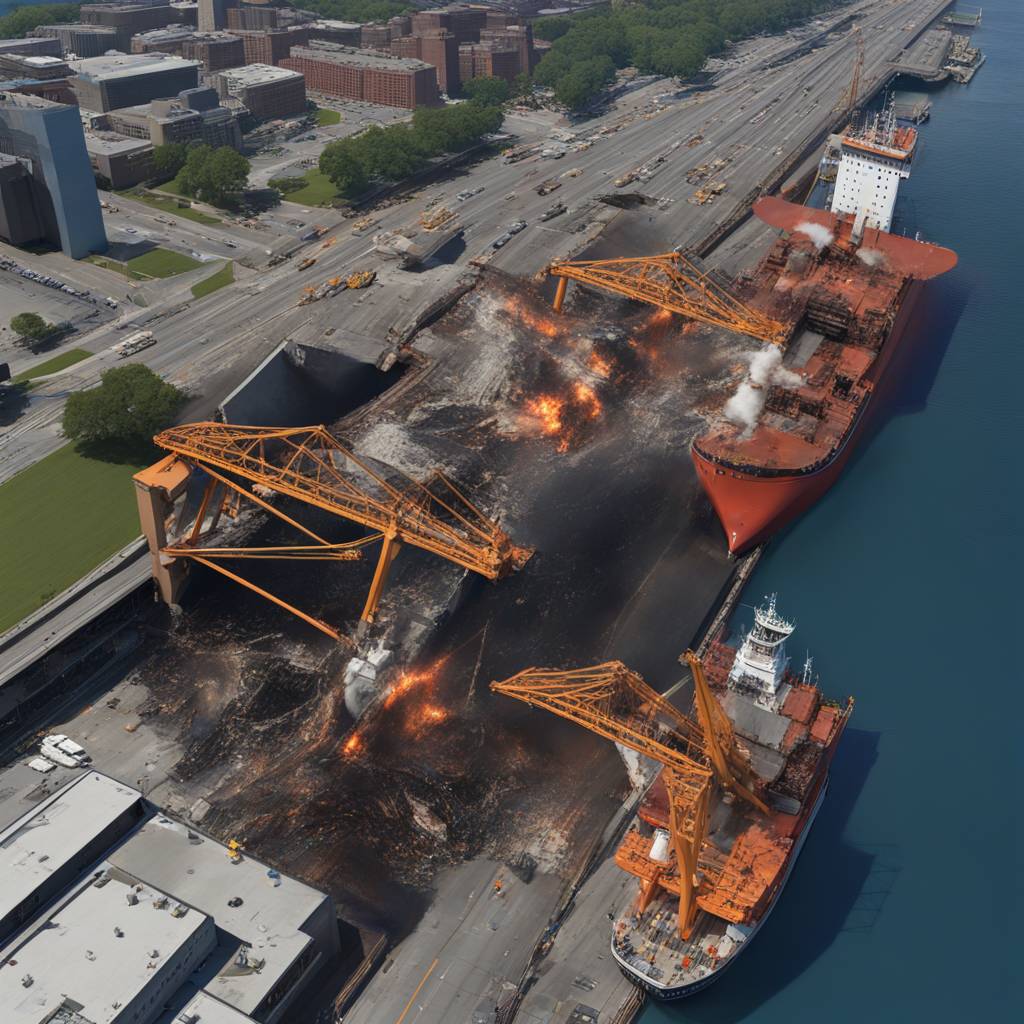The National Transportation Safety Board has released images and video of investigators onboard the Dali cargo ship, which is stuck underneath the collapsed Francis Scott Key Bridge in Baltimore. Photos show NTSB investigators launching drones and examining materials on the bridge of the ship. The vessel’s bow is currently sitting on the bottom due to the weight of the debris from the collapsed bridge, and coordination with the Army Corps of Engineers is necessary for the removal of this debris before the ship can be lifted. The cargo ship was carrying 56 containers of hazardous materials, some of which were breached, leading to a sheen in the water that authorities will address. The investigation is expected to take one to two years, with a preliminary report due in two to four weeks.
Two bodies were recovered from the Patapsco River, while four construction workers remain missing and are presumed dead following the bridge collapse. The conditions of the wreckage have led authorities to transition from a recovery mode to a salvage operation, as divers are no longer able to safely navigate the superstructure surrounding the vehicles and debris. The NTSB chair, Jennifer Homendy, emphasized that the investigation will be a massive undertaking and may result in urgent safety recommendations being issued during the process. The Coast Guard and other agencies are working on the removal of the debris and ensuring the safety of individuals on site.
The Singaporean-flagged cargo ship was carrying hazardous materials, including corrosive flammable cells, lithium-ion batteries, and other dangerous substances. The breach of some of these containers has led to concern about environmental contamination, with a sheen being identified in the water. The investigation is expected to involve extensive analysis and coordination with various agencies to ensure the safe removal of the wreckage and debris. The challenging conditions at the site have required a shift in operations from recovery to salvage, with divers facing increased risks in navigating the area due to the amount of concrete and debris surrounding the wreckage.
The removal of the debris from the collapsed bridge is essential for the safe recovery of the cargo ship and ensuring that hazardous materials are properly contained and removed from the site. The collaboration between the NTSB, Coast Guard, Army Corps of Engineers, and other agencies is crucial in managing the complex operation and addressing potential environmental impacts. The focus is on securing the area, recovering any additional victims, and preventing further harm from the hazardous materials on board the ship. The investigation is expected to continue for an extended period, with regular updates provided on the progress and any safety recommendations that may arise during the process.
Despite the challenging conditions and risks involved in the salvage operation, efforts are being made to address the aftermath of the bridge collapse in Baltimore. The recovery of victims, removal of hazardous materials, and safe extraction of the cargo ship are top priorities for the agencies involved. The coordination between federal, state, and local authorities is crucial in managing the situation and ensuring that proper procedures are followed to mitigate any further harm. As the investigation progresses, the focus will be on identifying the causes of the collapse and implementing measures to prevent similar incidents in the future. The collaboration between agencies and the commitment to safety and environmental protection are key elements in the response to this tragic event.















